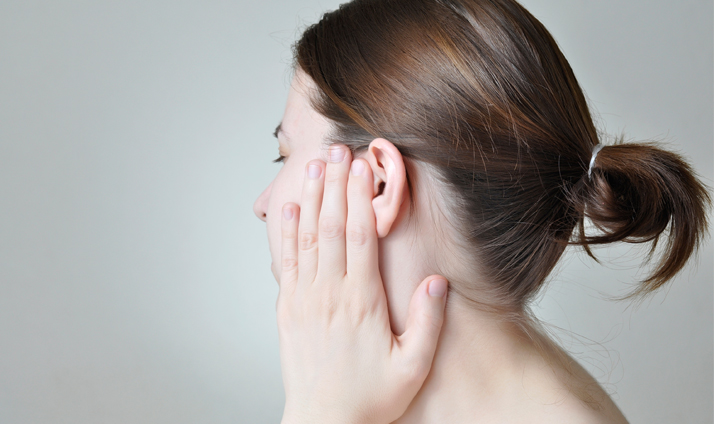A few weeks ago I was the unfortunate recipient of a sinus infection. After just a couple of days, my ear completely blocked. Two doctor’s visits, two courses of antibiotics and some prednisone, decongestant tablets as well as saline nasal spray and inhalations, I was at my wits end!
I couldn’t hear out of my left ear… and this lasted for two and a half weeks. According to my doctor this can be normal; thankfully, of its own accord, my ear finally it equalized and it was pure relief.
This experience gave me a new appreciation of my hearing and that I take it for granted. Being unable to hear must be incredibly challenging for some people. It also made me think of our customers – not being able to hear can be frustrating for the customer and they also may not clarify that they have heard and understood your advice as they may be very embarrassed that they cannot hear.
Being pharmacy assistants we need to be able to communicate effectively with our customers and we need to remind all customers to protect their hearing.
Taking care of your ears
Firstly, this involves understanding the parts that make up the ear and how the ear functions. Secondly, it involves how to care for the outer ear as well as how to protect your hearing by caring for the inside of your ears.
The outer ear
The outer ear acts as a funnel for sound to enter the ear. It consists of the pinna, which is the visible part that sits on the side of the head, and the outer ear canal. Sound waves are funnelled through the outer ear and they move along the external ear canal until they reach the eardrum causing it to vibrate. Wax, combined with dirt and dead skin cells, is continually moving through the ear canal towards the outer ear, where it can fall out.
The middle ear
The middle ear is a cavity made up of the eardrum (also known as the tympanic membrane) and three small bones – the stirrup, anvil and hammer. Vibrations of the eardrum are picked up by these three bones and continue their passage to the inner ear.
A hollow tube that goes from the middle ear to the back of the throat is known as the Eustachian tube.
The Eustachian tube connects the middle ear space to the back of the nose. Its primary function is to ventilate the middle ear, assisting to maintain normal air pressure in the ear. Air reaches the middle ear through the Eustachian tube which connects the middle ear to your nose and throat. The Eustachian tube is closed most of the time but opens when we swallow, yawn or hear our ears ‘pop’.
The second function of the Eustachian tube is to drain any accumulated secretions, infection or debris from the middle ear space. Several small muscles located in the back of the throat and palate control the opening and closing of the tube. In children this tube is shorter, flatter and more likely to get blocked.
The internal ear
The internal ear is a complicated structure. It is responsible for the sensation of sound as well as for the organs of balance. Balance helps us stay upright when standing, and helps us walk, run, sit and move without falling or becoming dizzy.
The inner ear is made up of the cochlea, the auditory nerve and the organ of balance (also known as the vestibular apparatus). In the cochlea the vibrations of the middle ear are changed into nerve impulses that are sent to the brain. The brain interprets these nerve impulses as sound.
Cleaning the ears
The wax that naturally occurs in your ears is nature’s way of protecting this important organ of your body. The wax stops small objects from entering and damaging the middle and inner ear. Wax coats the skin of the ear canal and protects the ear canal from things such as dirt, dust, small insects and bacteria.
The ear canals are self-cleaning. The wax works its way out from the inner ear to the outer ear and helps to remove dead hair, skin cells and dirt from the ear. Once wax and dirt reach the ear opening, they usually dry up, become flaky, and fall out. Cleaning out earwax is usually not recommended as a lack of wax may increase the risk of infection or lead to dry, itchy ears. In most cases, people simply need to wipe around the outer ear with a damp face washer or towel to keep their ears clean.
There is a wise saying that you should never put anything smaller than your elbow into your ear. Your customers should be advised that cleaning the ear with cotton buds, hair pins or other implements may simply push wax further into the ear and cause damage to the lining of the ear canal or the ear drum. Cotton balls are a safer alternative to use when cleaning the ears. Cotton balls eliminate the risk of deep penetration that poses the risk for blockage of the ear or damage to the eardrum.
Ear conditions
Many of the ear problems and complaints that bring customers into a pharmacy include the following:
- Ear wax blockage
- Swimmers ear
- Middle ear infections
- Inner ear infections
- Hearing loss
- Ear piercing infections
- Foreign object in the ear
It’s important to remember that we must always protect our customer’s privacy, so we can’t just speak louder if someone is having trouble hearing. Here are a few tips for communicating effectively:
- Demonstrate products where possible
- Use hand gestures to explain what you are talking about
- Write down specific instructions and important information
- Show the customer the directions on the box


This information was very interesting and helpful.
Thankyou!
We’re glad you enjoyed it!
Thanks this is helpful.
That’s great to know!